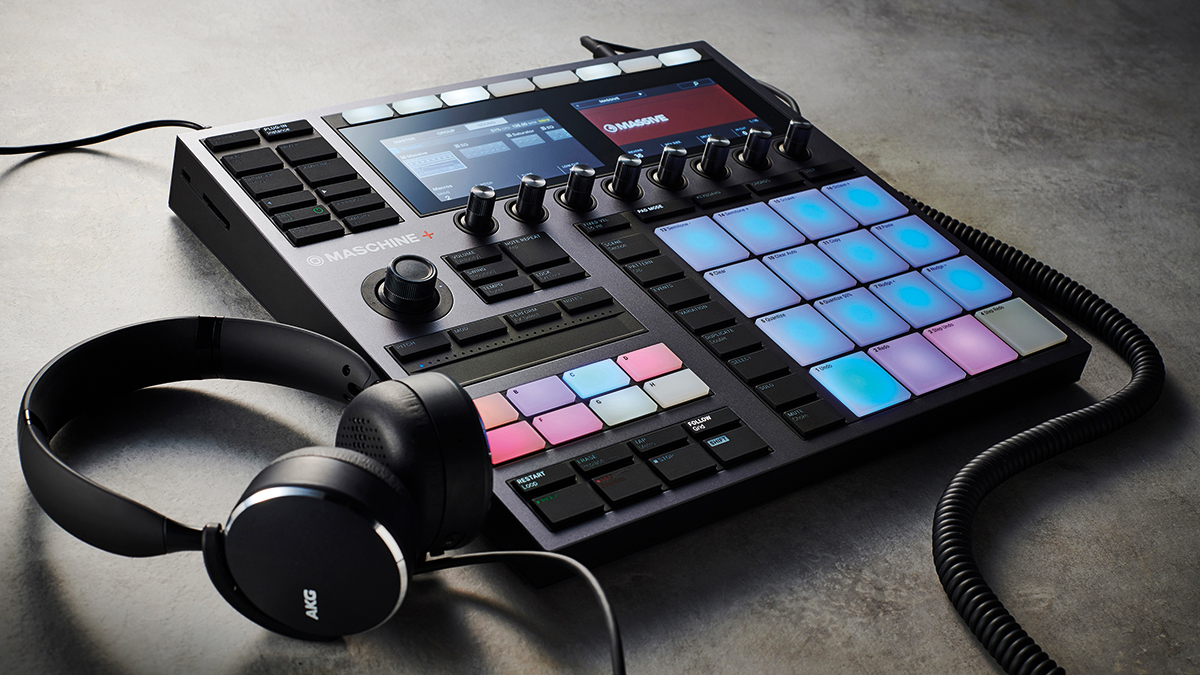MusicRadar Verdict
There are some limitations, but Maschine+ delivers the core Maschine workflow in standalone form, proving inspiring and hugely fun in the process.
Pros
- +
A fully-fledged Maschine experience fully out-of-the-box.
- +
Included instruments and sounds cover a broad range of bases.
- +
Workflow is generally slick and isn’t hindered by the lack of a laptop screen.
Cons
- -
Included synths are classics, but undeniably long-in-the-tooth.
- -
It could use some more creative effects.
- -
I/O is lacking compared to its closest rivals.
MusicRadar's got your back
What is it?
Of the major players in music technology, few have remained as steadfastly committed to the software realm as Native Instruments.
Where the likes of Arturia, Akai or Novation have each dabbled in plugins, analogue instruments and hardware devices, NI has - even after 20 years and hundreds of product releases - kept its focus squarely on creating software tools and peripherals to work alongside them.
In that context, Maschine+ is a significant move for the brand, in that it’s NI's first product that isn’t designed primarily to work in conjunction with a PC, Mac or iPad.
In reality, though, Maschine+ isn’t actually that much of a departure. Technical details aside, this isn’t some radical new product stream; in fact, aside from some limitations and minor changes, Maschine+ offers the exact same hardware/software workflow as 2017’s Maschine Mk3, albeit running on an internal OS as opposed to an external computer.
If that sounds dismissive, it’s not supposed to – over the years the Maschine range has developed into a slick and comprehensive sampling and sequencing system, and the Mk3 is undoubtedly the pinnacle of that line-up. If you’ve used Maschine Mk3, you can probably imagine how it could potentially work as a standalone device, and what you’re picturing is likely pretty close to reality.
It’s testament to the tight hardware-software synergy of that controller design that you can effectively remove the computer from the equation without hampering the capabilities.
Let’s get this out of the way early - as a concept, Maschine+ works. While there are some significant limitations compared to the desktop version - which we’ll come to shortly - on the whole, this is the bonafide Maschine experience in standalone format.
With Maschine+, you can sample, sequence, compose with soft synths, perform and even work with external hardware and, crucially, in our time using the device, at no point have we felt significantly hindered by the lack of a mouse, keyboard or full laptop screen.
- On a budget? These are the best cheap MIDI keyboards
- Make more music with the best audio interfaces around
- Our pick of the best samplers in the world right now
Much like its closest rivals, Akai’s standalone MPCs One and Live, Maschine+ isn’t a purely standalone instrument. As with those competitors, this latest Maschine comes equipped with a controller mode, whereby it can act as an audio interface and MIDI controller for the desktop version of the Maschine 2 software.
As such Maschine+ isn’t so much an alternative to the standard Maschine setup as it is an expansion; keeping the full features of the existing studio workflow but letting users unplug from the computer too.
Seeing as both the controller layout and software architecture are near identical to that of the Mk3, we’ll skip the discussion of the core workflow in favour of highlighting what’s different here.
This latest Maschine comes equipped with a controller mode, whereby it can act as an audio interface and MIDI controller for the desktop version of the Maschine 2 software.
Despite looking and functioning much like the Mk3, unsurprisingly there are some technical differences to the hardware itself. Firstly, Maschine+ comes encased in an anodized aluminium case that gives it a slightly shinier look but also feels considerably more robust than its plastic counterpart.
I/O along the rear is broadly the same as that found on the Mk3, with two TRS inputs, a dynamic mic input, two TRS main outputs, stereo headphone out, an expression pedal input plus MIDI In and Out.
There are additions, though, with an added pair of USB inputs on the rear and an SD card slot along the side - which comes equipped with a high-speed 64GB card.
The built-in audio interface, meanwhile, operates at 44.1 kHz/24-bit in standalone but can go up to 96 kHz/24-bit when connected to a computer.
Under the hood, Maschine+ packs an Intel Atom quad-core processor and 4GB of RAM, which is used to run a custom Linux OS. Built-in storage is 32GB, used to install the OS and factory sounds, meaning the aforementioned SD card and USB slots handle all user storage.
Maschine+ is also equipped with WiFi and - if the little logo on the side of the box is to be believed - Bluetooth, although there doesn’t seem to be any implementation of the latter functionality as-yet.
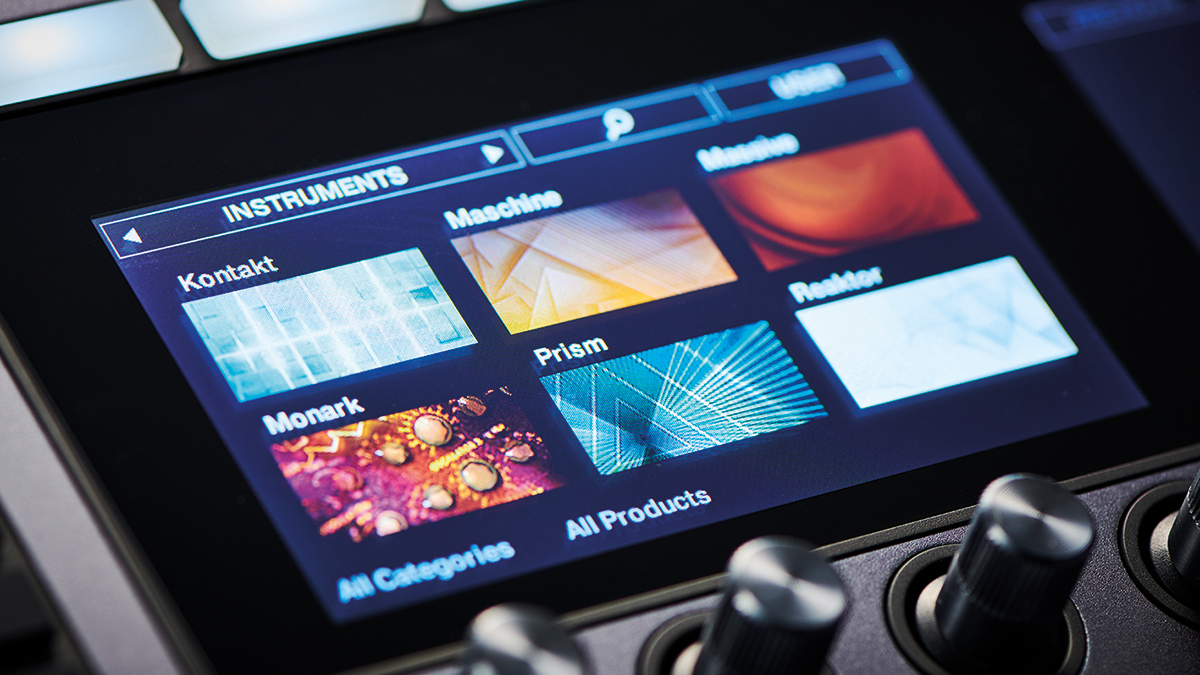
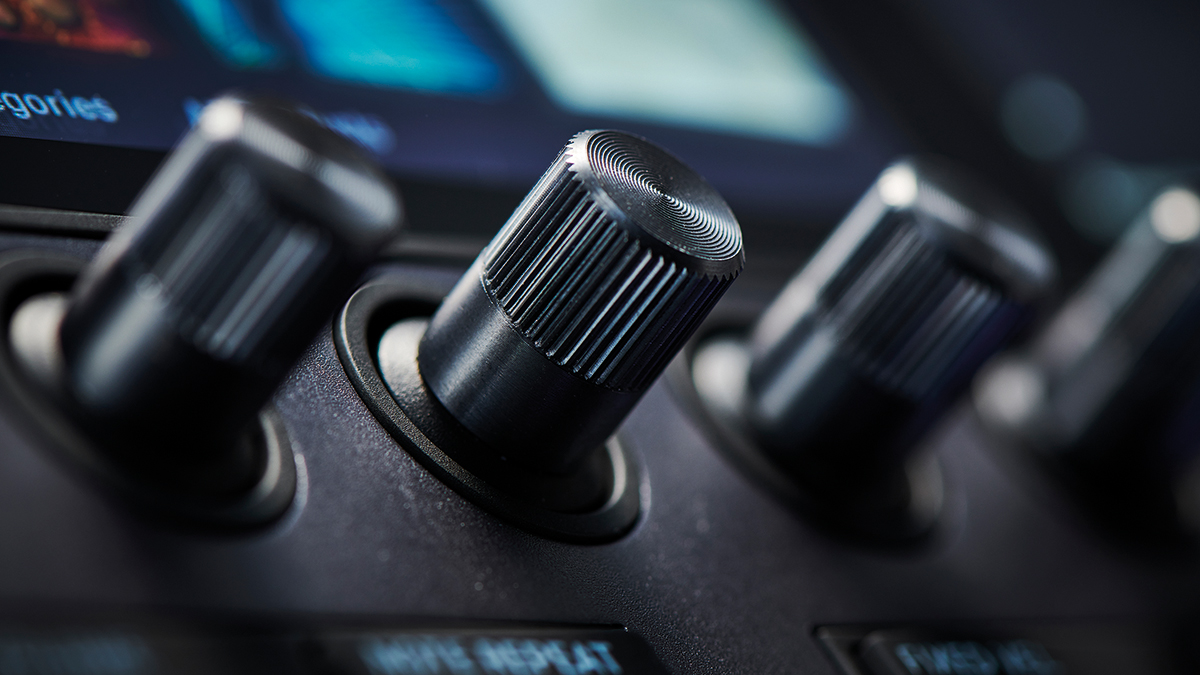
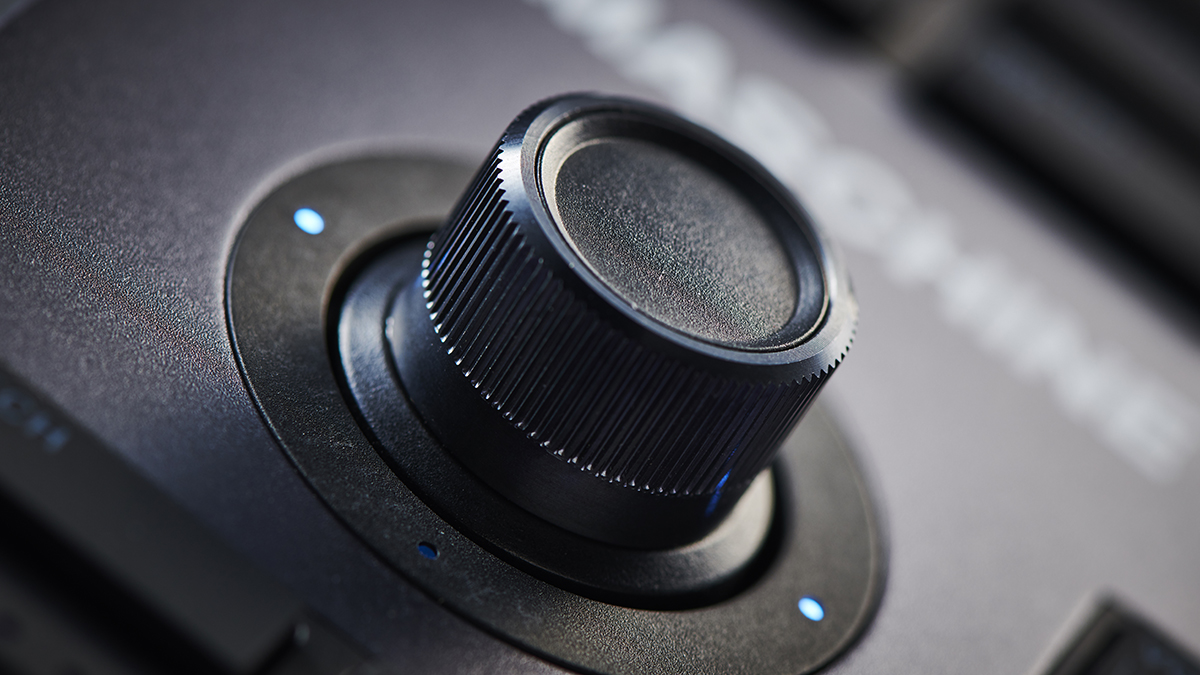
Performance and verdict
As with Akai’s standalone MPCs, there are limitations as to what Maschine+ can run via its onboard OS compared to the desktop version of the software. The Maschine 2 software itself ports over in full, including its Bass Synth, six Drum Synth modules and a line-up of effect processors, but currently, only a handful of NI plugins and no third-party tools can be used away from a computer.
The NI instruments currently compatible with standalone mode are Massive, Monark, FM8, Prism, Retro Machines and ‘Factory Selection’ versions of Kontakt and Reaktor, all of which come supplied with the hardware. On the effect front, Maschine+ comes equipped with the Phasis phaser module and Raum ‘creative reverb’.
You can look at this selection of plugins in one of two ways. On the one hand, there’s no getting around the fact this is a fairly dated selection of instruments. Of the synths, the Minimoog-inspired Monark is the most recent release, despite being nearly eight years old, and there’s no sign of recent offerings like Massive X or Form.
On the flip side, these instruments - Massive and FM8, in particular - are stone-cold classics, and while their desktop interfaces look rather dated they still sound excellent.
Personally, we feel that having this selection of tools in standalone format is nothing to scoff at; between Monark’s solid analogue emulations, Massive’s modulated wavetables, the digital synthesis of FM8 and the samples contained within the Kontakt and Maschine factory libraries, producers in any electronic genre could happily churn out plenty of music before running out of inspiration. And that’s before even touching on the bundled expansions [see boxout] or the ability to import, record or sample audio.
Having this selection of tools in standalone format is nothing to scoff at.
Implementation of these synths and effects works as it does when using the Mk3 controller hardware, whereby the eight parameter knobs below the screens can be used to tweak a varying assortment of macros and core parameters. In most cases you don’t quite get full access to the sound engine, but there’s enough depth to tweak and tailor sounds to suit your needs.
These controls are better implemented for some devices than others. Given the open-ended and shapeshifting nature of Reaktor, it can be a little confusing working out precisely what you’re editing at times, meaning editing sounds often descend into blind knob-twiddling.
Users can import synth and effect presets from the desktop plugin counterparts though, meaning there’s a nice workflow in designing complex custom patches using a computer then sending them over to Maschine+ to jam out patterns in standalone mode. It’s possible to import your own Kontakt patches too, which adds considerably to the flexibility.
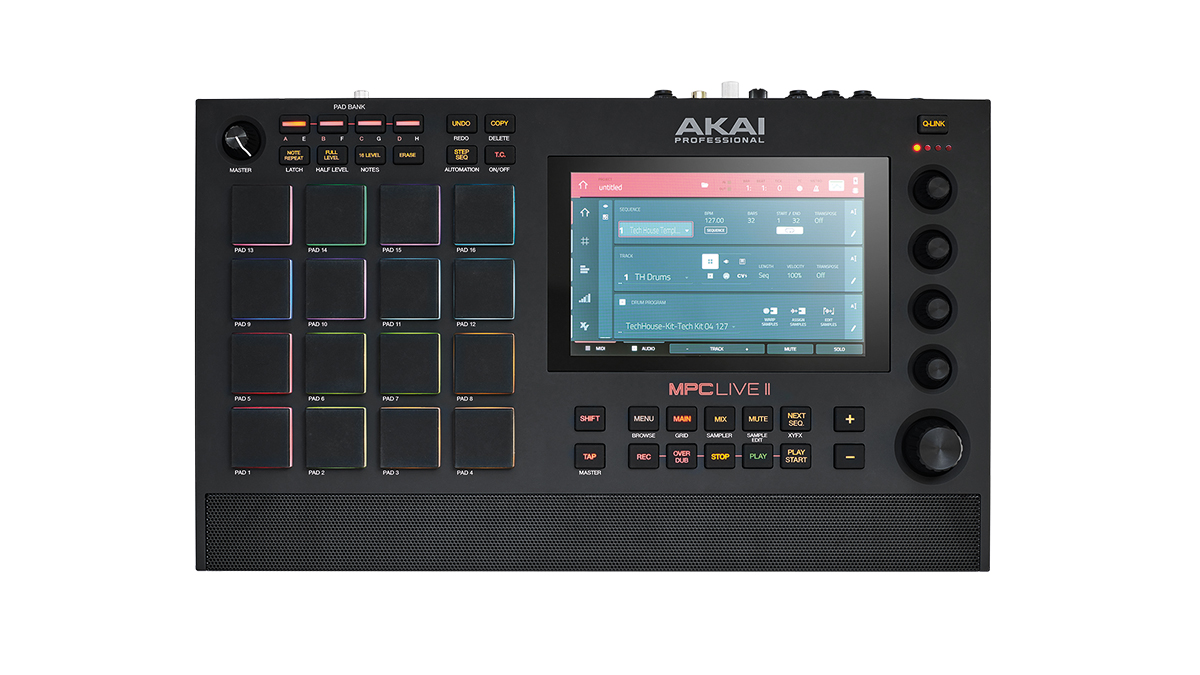
Akai MPC Live II
A truly go-anywhere music production experience – and now better equipped than ever. The Live II remains the high point of the current MPC range.
Pioneer DJ Toraiz SP-16
Some firmware refinement is needed to justify its price, but there's a lot to like about this inspiring and intuitive standalone sampler.
Native Instruments Maschine Mk3
If you're not fussed by the whole standalone the thing then the Maschine Mk3 still takes the essence of Maschine Studio, adds an audio interface and touchstrip, and packs it all into the optimal form factor for stage and studio.
Since we reviewed the Maschine Mk 3, there have been a few developments to the overall capabilities, all of which benefit Maschine+. Recent years have seen NI finally incorporate audio into the Maschine workflow, and as well as simple sampling and looping, it’s now possible to record full takes of stereo audio that can then be edited using the fairly comprehensive set of tools in the sample editing window.
The Maschine software’s arrangement tools have evolved somewhat too, now encompassing a system the uses individual Ideas and Song windows and a system of Clips. These allow users to initially play with loops and scenes before laying them out in a more traditional timeline manner.
It can feel a little convoluted, but there’s certainly a considerable amount more flexibility now. For example, Clips offer users an easy way to do things such as overdub brief audio recordings into the middle of an arrangement or create transitions between loops, all of which would have been tough in previous iterations of Maschine.
Personally, we still feel like the arrangement and ‘track finishing’ tools are still Maschine’s weakest elements, but that doesn’t necessarily hinder Maschine+ – particularly in standalone mode, there’s a solid case to be made for this being used as an ideas generator and sample sketchpad, before dumping your work over to a more traditional DAW for final arrangement and mixing.
At the other end of the process, it would be a great live performance tool to slice-up and jam with pre-existing tracks, loops and patterns.
Maschine+ is impressive as it is, but there are things we’d like to see expanded or added for future versions. We really like the way you can download Expansions via WiFi, but I’d like to see NI make more of using these capabilities in order to send projects, presets and recordings back and forth between Maschine+ and a desktop system without the need to plug in via USB.
Obviously, the addition of more instruments and effects would vastly add to the appeal too. NI has implied this is on the roadmap, and if so we hope they prioritise adding a few more of their effect tools. While the existing setup is hardly wanting for processors, we do find ourselves missing some deeper creative tools such as Replika XT and NI’s analogue-modelled EQs and compressors.
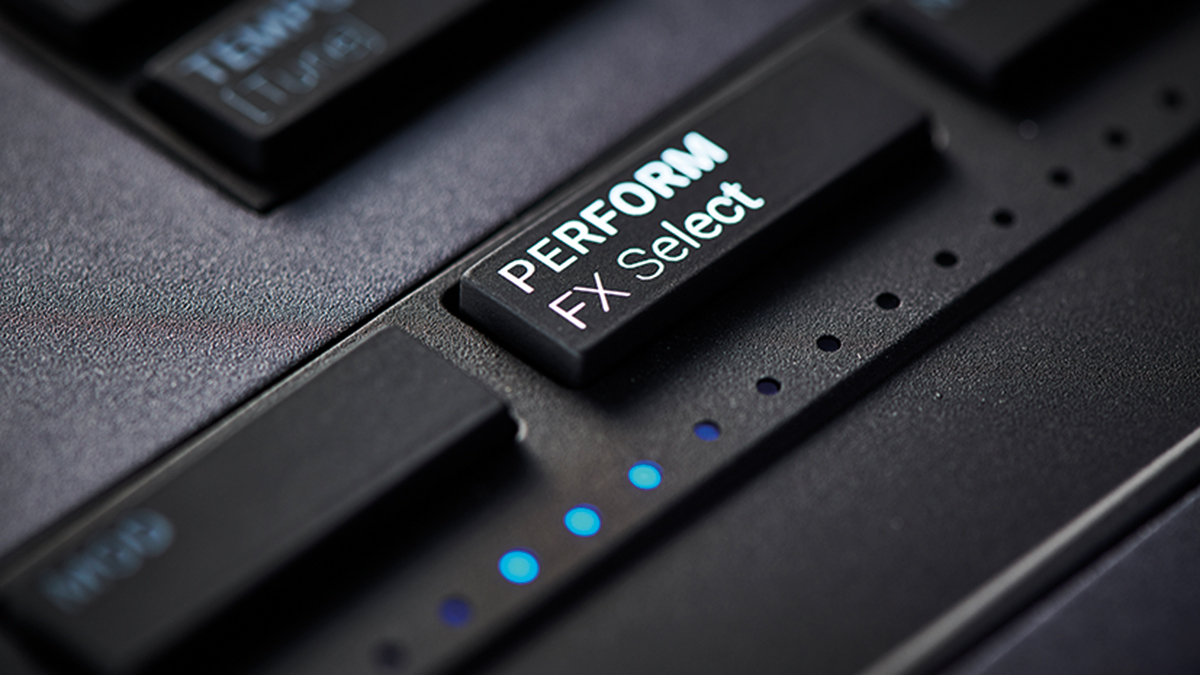
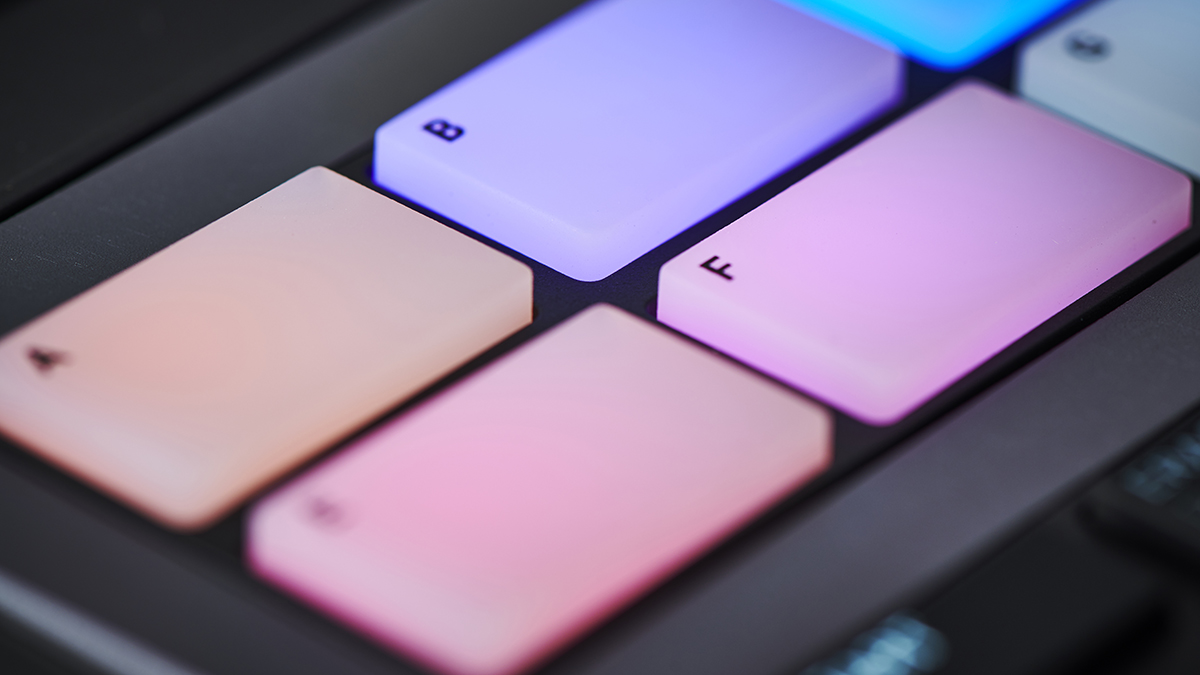
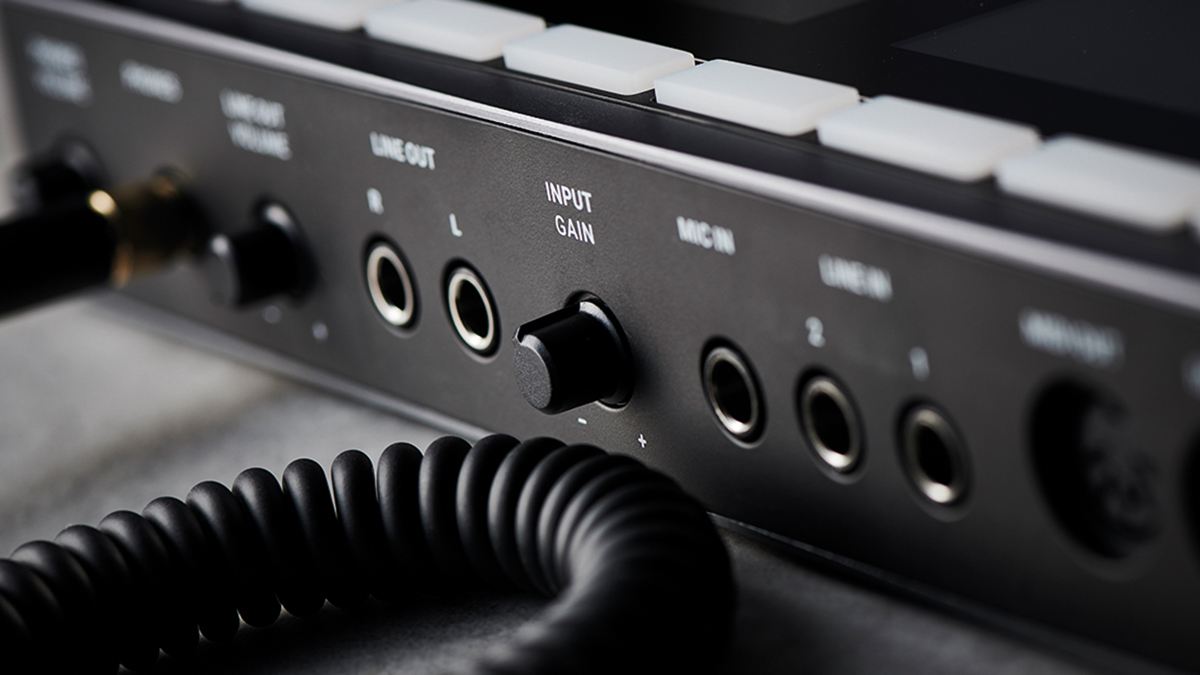
When directly compared to Akai’s MPCs, there are pros and cons for each range. Price-wise, Maschine+ is roughly in line with Akai’s recently updated MPC Live II, which outguns it on several key hardware fronts.
The MPC Live features a rechargeable battery and built-in speaker, both of which are very nice but we can live without them. What we do miss, comparing the two, is the Live’s considerably more expansive I/O, boasting triple the number of line inputs, double the MIDI I/O and several CV outputs.
The Maschine+ workflow actually works really nicely in conjunction with hardware synths and drum machines, so it’s a shame not to have a few extra inputs available. It is possible to expand the audio I/O, however, by connecting one of NI's Komplete interfaces to the USB inputs. In theory it may be possible to do this with third party interfaces in the future too, at the time of writing we've had hit-and-miss results when trying this.
Conversely, Maschine+ has twice the RAM under the hood than the MPC Live and – as much as Akai’s stock synths are decent – it can’t compete with the pedigree of Massive, FM8, Kontakt and the wealth of third-party presets available for each of these. The Maschine software workflow is generally a little tighter and slicker than that of the MPCs too.
Maschine+ is a success, in that it lives up to the promise of bringing at least the core Maschine experience out of the box in a satisfying way.
On that front, it’s worth highlighting another distinction; whereas the MPCs impose hard track count limits in standalone mode, Maschine+ is more open-ended, including a CPU meter so users can monitor the project load themselves.
For reference, we managed to create a project using five instances of FM8, three of Massive, two of Monark, one each of Reaktor and Kontakt, eight instances of Raum and four of Phasis, and it was only when we tried to add Prism as a Group processor that Maschine+ finally seized up (we were able to undo this without losing the project).
Stability seems to be pretty good - we experienced a few issues early on but these can be put down to using a Beta version of the OS without access to a manual, and the most recent update seems pleasingly solid and bug-free.
In all then, Maschine+ is a success, in that it lives up to the promise of bringing at least the core Maschine experience out of the box in a satisfying way.
Given that it’s twice the price of a Mk3, do you really need a standalone Maschine? That will come down to the individual user, ultimately – personally we’ve really enjoyed my time with Maschine+, and using it purely as a hardware instrument has really clicked in a way that’s proved inspiring and very enjoyable.
That being said, because Maschine+ so closely follows the workflow of the existing Mk3, it is unlikely to tempt over users who’ve not been convinced by Maschine in the past.
On the whole, though, Maschine+ seems like a smart move for NI. If the Berlin brand continues to develop the OS and add more tools – and maybe even coax over some third-party NKS offerings? – then this has scope to get better and better.
MusicRadar verdict: There are some limitations, but Maschine+ delivers the core Maschine workflow in standalone form, proving inspiring and hugely fun in the process.
Hands-on demos
Native Instruments
Accurate Beats
Loopop
Specifications
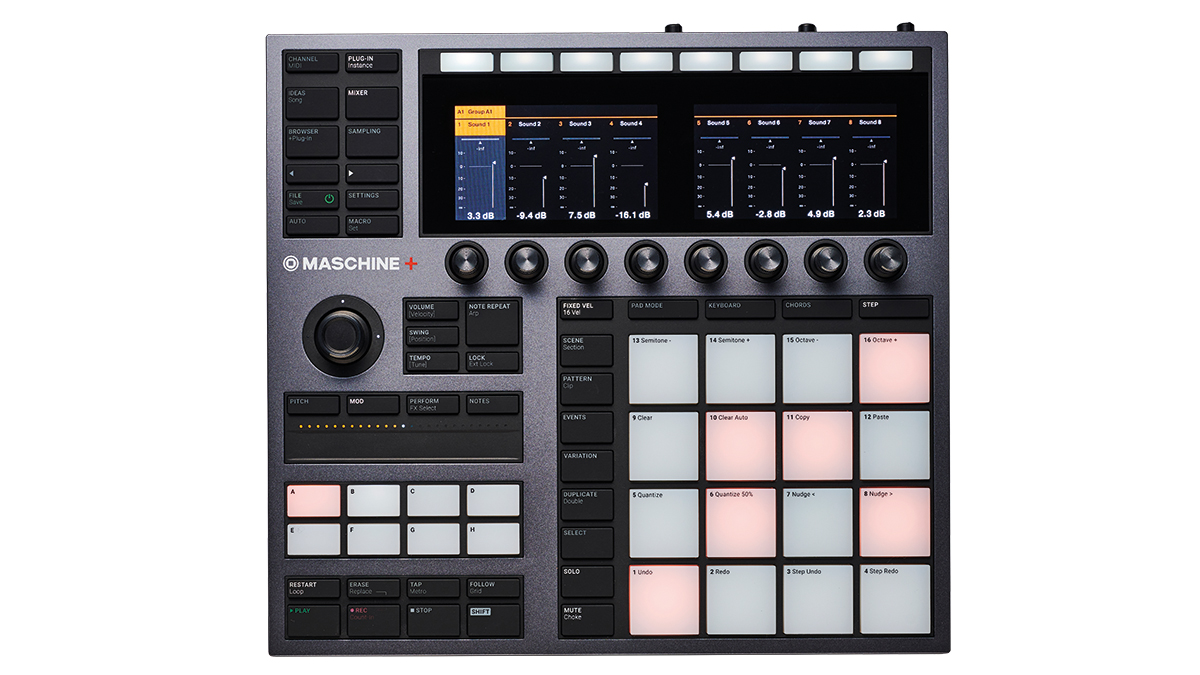
- Type: Standalone production and performance instrument
- Key Features: Pre-installed with an 8GB factory sound library; 16 large, ultra-sensitive, multi-color pads; 8x touch sensitive knobs and a 4-directional push encoder; 1x horizontal Smart Strip for strumming notes, pitch bending sounds, performing with FX, use the lock-feature and more; 44.1 kHz / 24-bit audio interface (96 kHz / 24-bit in controller mode); Quad-core CPU and 4 GB RAM; WiFi and Link enabled; MIDI in and out.
- Contact: Native Instruments

I'm the Managing Editor of Music Technology at MusicRadar and former Editor-in-Chief of Future Music, Computer Music and Electronic Musician. I've been messing around with music tech in various forms for over two decades. I've also spent the last 10 years forgetting how to play guitar. Find me in the chillout room at raves complaining that it's past my bedtime.
“Excels at unique modulated timbres, atonal drones and microtonal sequences that reinvent themselves each time you dare to touch the synth”: Soma Laboratories Lyra-4 review
“I used everything I knew about music”: How Green Day exceeded expectations with their most ambitious song
YouTube just added AI tools that makes musicians, library music and video editors redundant
